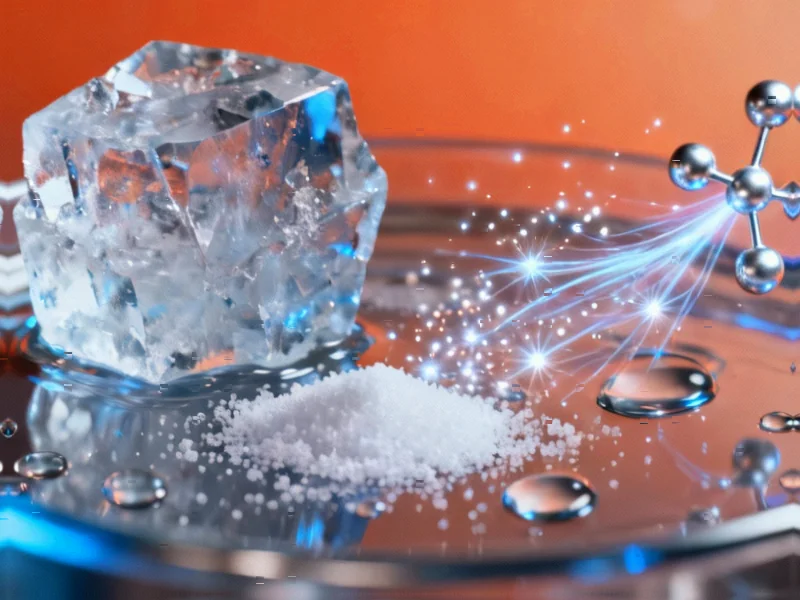A New Frontier in Sustainable Cooling
Scientists at Lawrence Berkeley National Laboratory and UC Berkeley have reportedly developed what could be the most promising alternative to conventional refrigeration in decades. Their ionocaloric cooling method represents a fundamental shift from the vapor-compression systems that have dominated refrigeration for over a century, according to research published in Science.
Table of Contents
What makes this approach particularly compelling is how it leverages familiar physics in an entirely new configuration. While traditional systems rely on refrigerants that evaporate and condense, the ionocaloric cycle uses electrical currents to move ions through a material, changing its melting point to absorb or release heat. It’s the same principle behind salting icy roads in winter, but engineered into a controllable, reversible cycle for precise temperature management.
The Environmental Imperative
The timing couldn’t be more critical. Current refrigeration systems depend heavily on hydrofluorocarbons (HFCs) with exceptionally high global warming potential—some thousands of times more potent than carbon dioxide. With countries committed to reducing HFC production by 80% under the Kigali Amendment, the race for alternatives has intensified dramatically.
“The landscape of refrigerants is an unsolved problem,” mechanical engineer Drew Lilley told reporters covering the research. “No one has successfully developed an alternative solution that makes stuff cold, works efficiently, is safe, and doesn’t hurt the environment. We think the ionocaloric cycle has the potential to meet all those goals if realized appropriately.”
Industry analysts suggest this could represent a watershed moment for the $160 billion global refrigeration market. The technology’s potential extends beyond household appliances to industrial cooling, HVAC systems, and even thermal management for electronics.
Surprising Efficiency in Early Tests
What has researchers particularly excited are the initial performance metrics. In laboratory experiments, the team achieved a temperature shift of 25 degrees Celsius (45 degrees Fahrenheit) using less than a single volt of charge. That level of temperature change reportedly exceeds what other caloric cooling technologies have managed to date.
The researchers used a salt composed of iodine and sodium to melt ethylene carbonate, a common organic solvent also used in lithium-ion batteries. Notably, this solvent can be produced using carbon dioxide as an input, potentially making the system not just carbon-neutral but carbon-negative over its lifecycle.
According to mechanical engineer Ravi Prasher, the technology appears promising across three critical dimensions: “the GWP of the refrigerant, energy efficiency, and the cost of the equipment itself.” Achieving strong performance in all three areas from initial experiments is what analysts suggest makes this development particularly noteworthy.
From Laboratory to Marketplace
The path from laboratory demonstration to commercial product remains challenging, of course. Researchers now face the engineering hurdles of scaling the technology while maintaining efficiency and reliability. Different salt combinations and system configurations need testing to optimize performance for various applications.
International research teams are already building on these findings. Reports indicate that by 2025, researchers had developed a highly efficient version using nitrate-based salts that were recycled using electric fields and membranes—exactly the kind of iterative improvement Prasher and his team anticipated their work would inspire.
As the technology matures, its applications could expand beyond cooling to include heating systems, creating a versatile platform for temperature control across multiple domains. The fundamental physics suggests the cycle could work in both directions, though practical implementation will require significant engineering development.
For now, the research community appears cautiously optimistic. “We have this brand-new thermodynamic cycle and framework that brings together elements from different fields, and we’ve shown that it can work,” Prasher noted in statements to the press. The coming years will reveal whether this promising laboratory discovery can transform how we keep our world cool in an increasingly warming climate.



